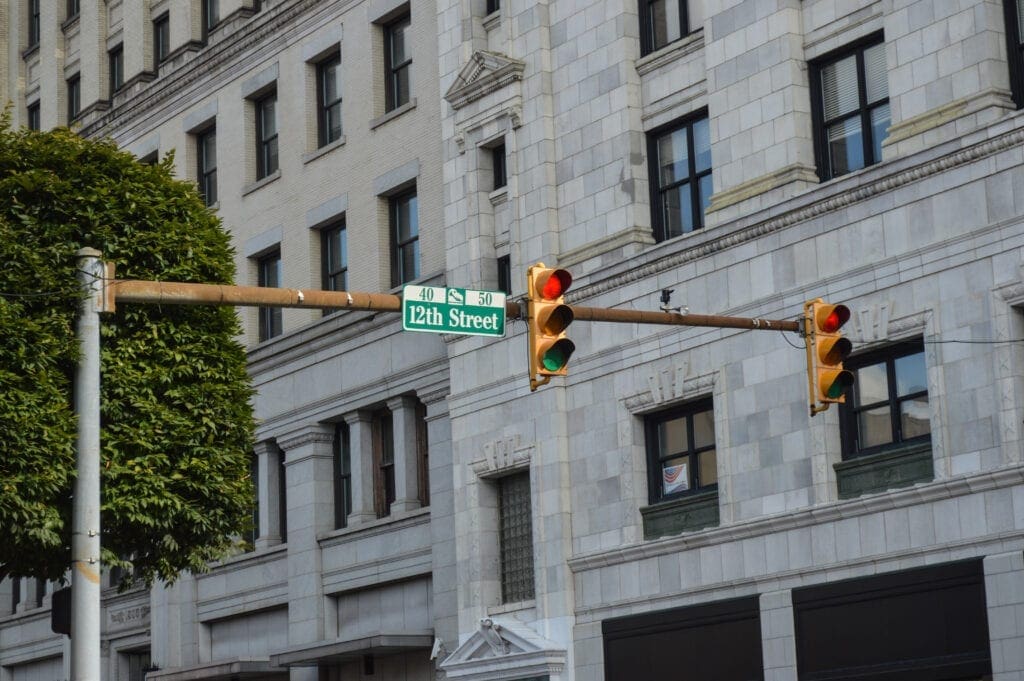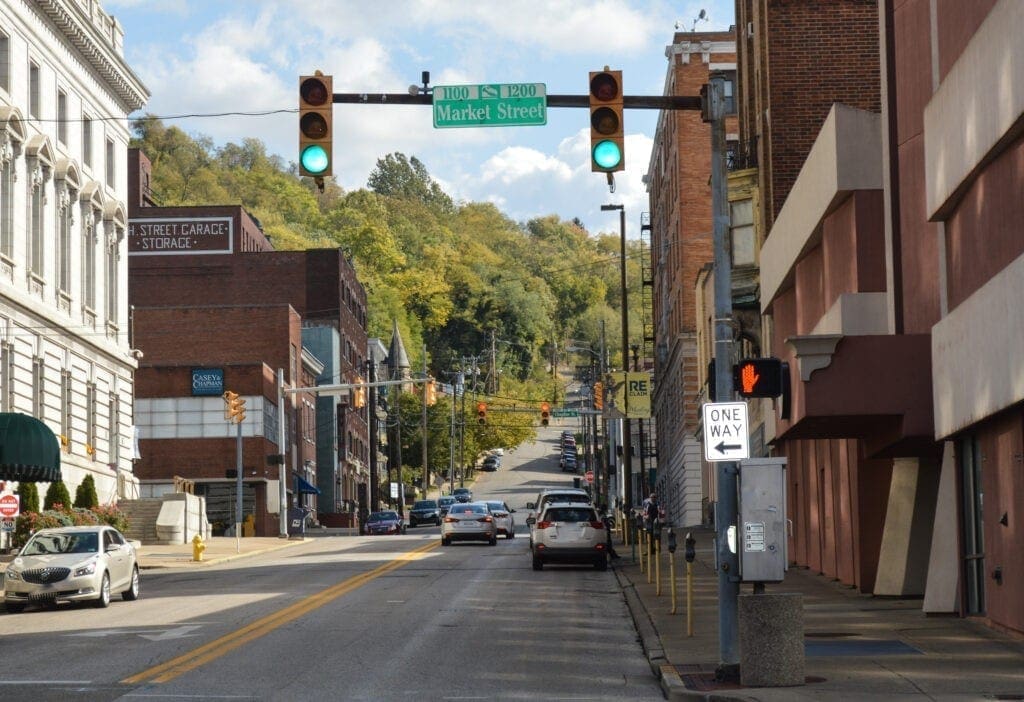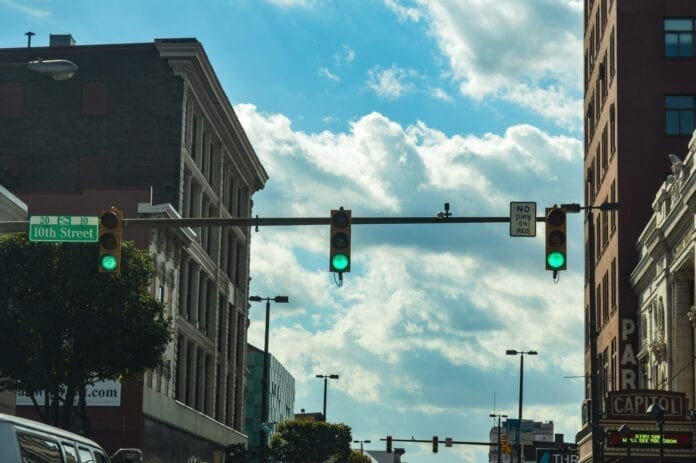The long-awaited, two-year streetscape project for the downtown Wheeling area is scheduled to begin in Spring 2021 and will feature an updated system for traffic signalization.
Tony Clark, the District 6 engineer for the W.Va. Division of Highways, explained the system that operates the traffic lights between 10th and 16th streets and along Main and Market streets was installed more than 20 years ago. The streetscape project is projected to cost as much as $24 million and will include paved streets, smooth sidewalks and curbs, new trees, and the new traffic lights.
“The traffic signals that are in downtown Wheeling now and have been for a while is an antiquated system, but all of those signals have to work together,” Clark explained. “If you had each one of them working independently, it would cause a mess because one would not know what the other one is doing. So, those types of signals in close proximity of each other work together to increase traffic flow on the roads with the most motorists.
“It’s the same here in Moundsville from 12th Street up to where the football stadium is, and that’s because we want to get the traffic along W.Va. Route 2 moving along,” he said. “It’s all about the free flow of traffic along our busiest roadways here in District 6, and that’s one of the reasons why a new system will be installed in downtown Wheeling.”

Wasted Minutes of Life
Those who are employed in downtown Wheeling but reside elsewhere may not realize the frustration felt by residents in downtown or East Wheeling, but those who travel to the downtown district for dinner or events may realize the signalization operates on the same timing as it does during the workday. The same is true, unfortunately, during Saturdays and Sundays.
“What is supposed to take the priority are the main roadways, and in the case of downtown Wheeling, that’s Main and Market streets,” Clark said. “That’s the north-south thoroughfare of the main traffic that travels through downtown Wheeling. It just makes sense to allow that north-south traffic to take the priority because there are a lot more trucks and cars along those streets than there are the cross streets.
“Now, once the streetscape project is completed, those traffic signals will be linked the same way, but the new system will allow for upgraded programming of those traffic signals,” he said. “The new system will be similar to the old one because traffic is traffic, but the new system will be capable of a lot more.”
The traffic lights still will be controlled from the steel cabinets bolted on a few utility polls in the downtown area, but not only will law enforcement be able to control the signals during parades and running races and walks, the DOH will be able to schedule changes to the timing of the signals for the evening hours.
“Part of putting this new system in is to have more functionality with it as opposed to what remains in place at this time. That means there will be the ability to program it when those kinds of adjustments should be made to increase traffic flow,” Clark explained. “The new system should be set up to avoid traffic issues at all times of the day in that area.
“The way it is set up now is to account for those higher-volume traffic times, but that system does not adjust for the times when there is less traffic in downtown Wheeling,” he continued. “It will be set up to limit the cross traffic because there is so much more traveling north and south, but then it will go back into cycling based on what the radar systems see.”

Orange Barrell Galore
Not only will the downtown streetscape project take place along Main and Markets streets as well as parts of Chapline and Eoff streets in the spring, but the ongoing bridge and overpass improvements along Interstate 70 will continue and, according to Clark, the renovation and beautification of the Wheeling Suspension Bridge is expected to begin in April or May, as well.
“It’s a lot all at the same time and in close proximity to each other, but it all needs to get done,” the district engineer said. “I’m not sure at this point what the projected cost is for the Suspension Bridge because that project is being handled by the people in Charleston, but it is scheduled for (the bidding process) to begin in late November.”
Whether or not officials with the state Department of Transportation will reopen the historical span to vehicular traffic again will play a factor with how the new signalization system operates, Clark said.
“No matter what, the signals in downtown Wheeling still will be all tied together. The difference will be that it’s going to be a much more modern type of system,” the district engineer reported. “As far as what you will see, the signals will be different and the hardware and software involved with that system will be brand new and very much upgraded.
“The new hardware and software will involve a radar system that has the ability to detect the traffic at those signals so it can operate according to the traffic that’s present at the time,” Clark added. “The new system will be all above the ground so it is not possible for a something like an embedded loop system to get damaged by one of these large trucks we see here in the Northern Panhandle these days.”


